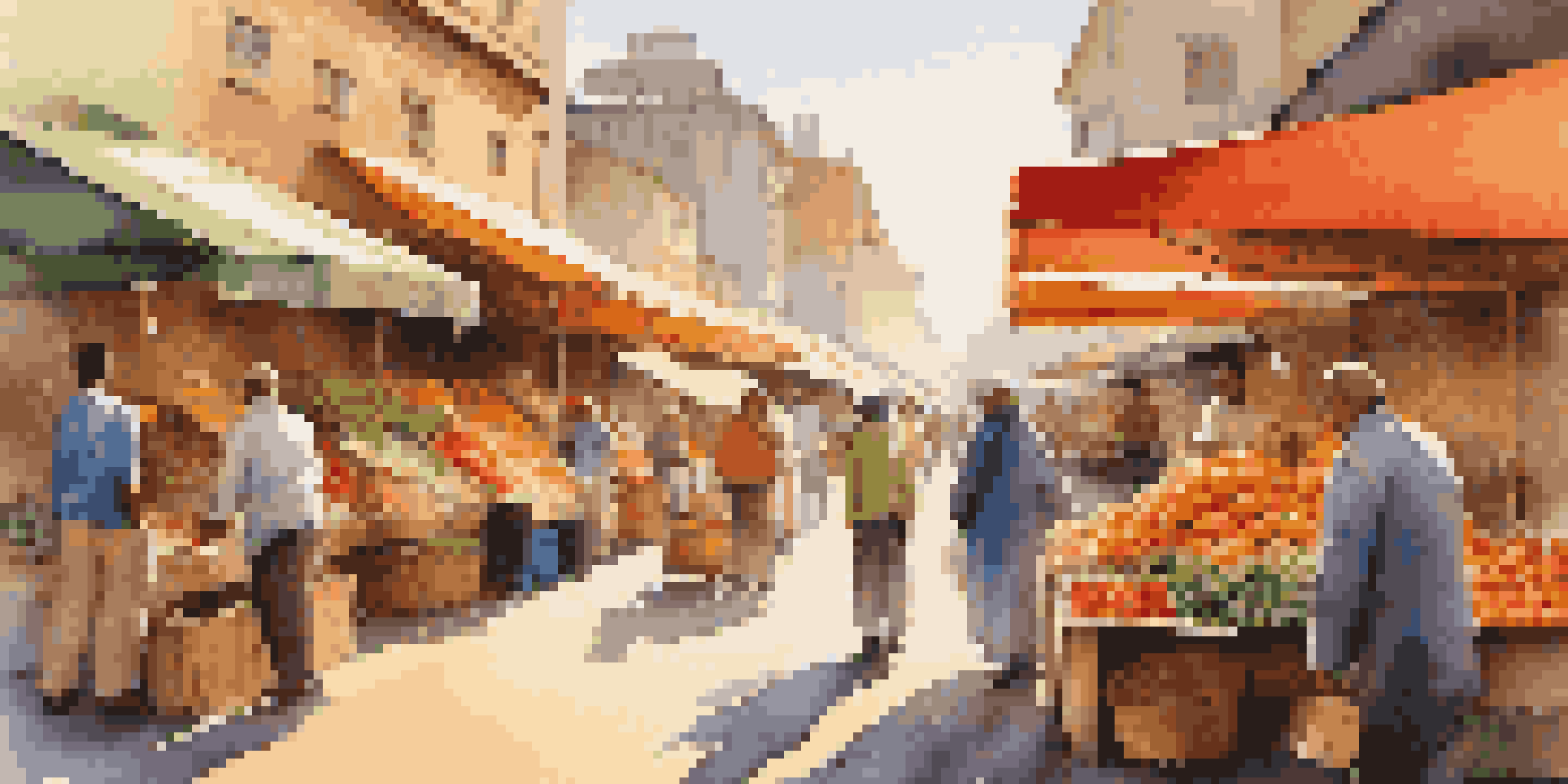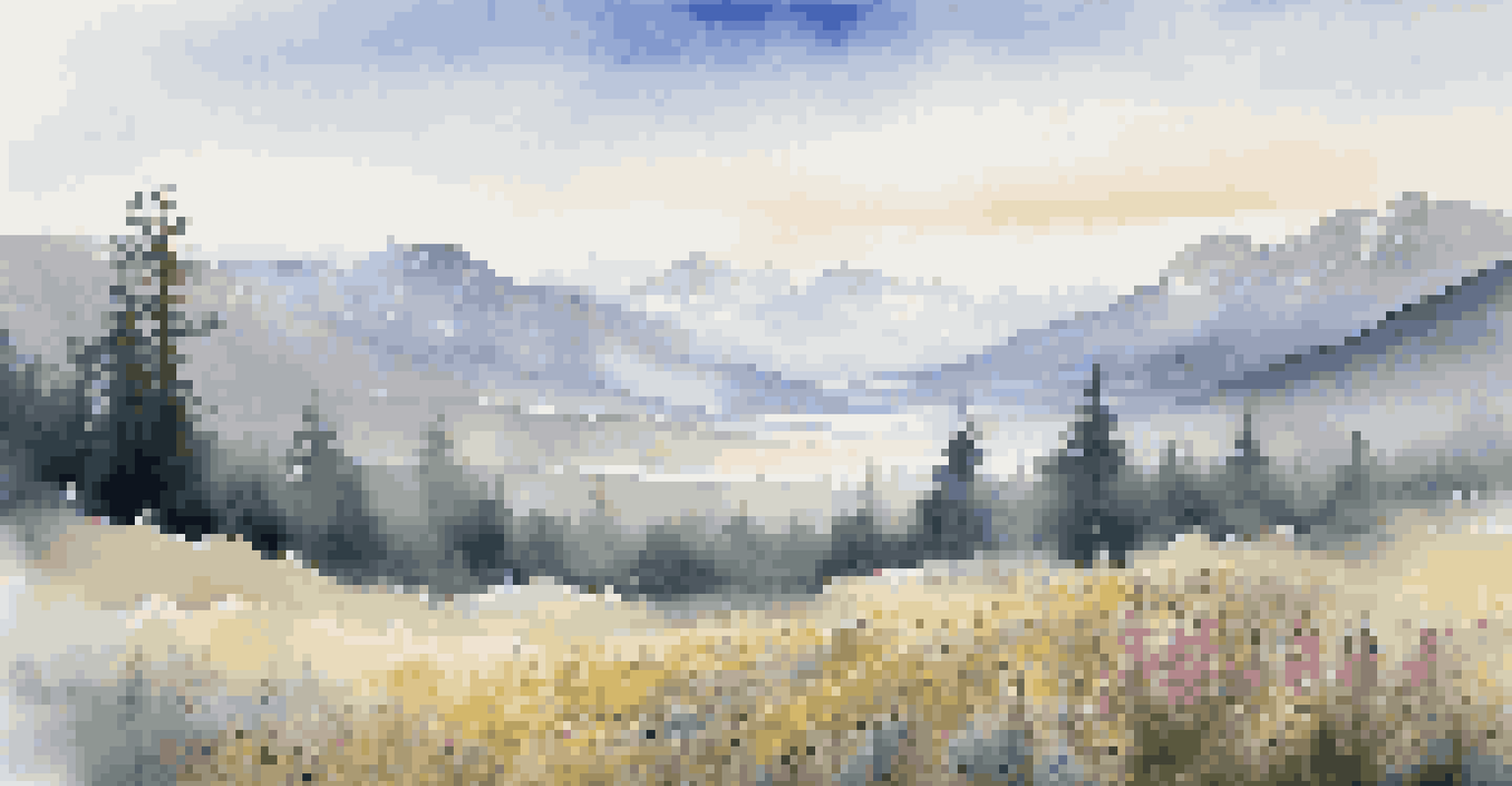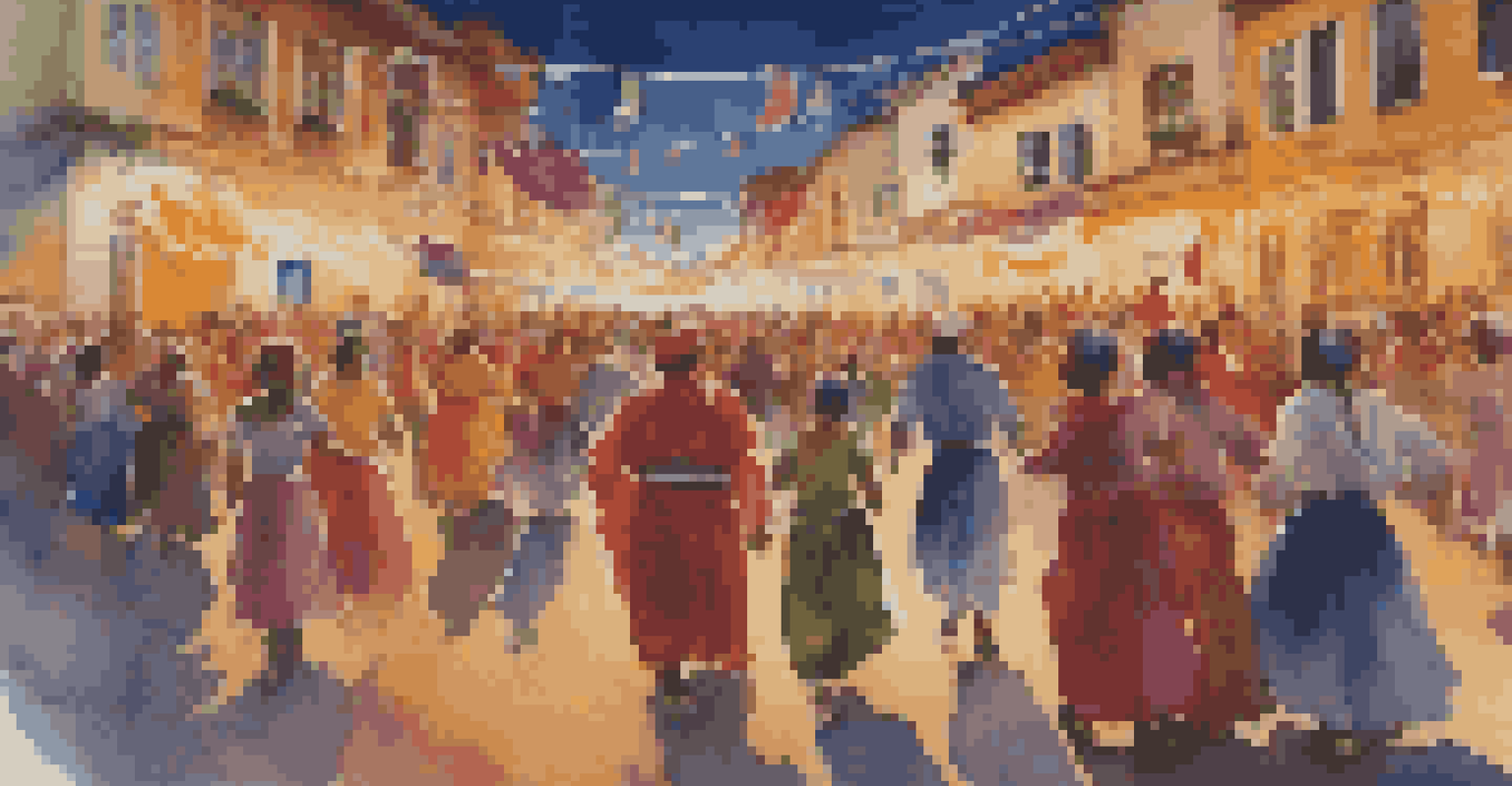The Importance of Perspective in Travel Photography Shots

Understanding Perspective: The Photographer's Eye
Perspective in photography refers to the way we view and capture a scene. It can significantly alter the mood and emotion conveyed in an image. By adjusting your point of view, you can create a sense of depth and dimension that draws viewers in.
The camera is an instrument that teaches people how to see without a camera.
Think of perspective as the storyteller of your photograph. A low angle can make a subject appear grand and powerful, while a high angle can evoke vulnerability or isolation. These subtle shifts can turn an ordinary snapshot into a compelling narrative.
To truly master perspective, one must practice seeing the world from different angles. Don’t just stick to eye level; crouch down, climb up, or even seek out reflections. Each unique viewpoint can unveil a new story waiting to be told.
The Role of Composition in Perspective
Composition and perspective go hand in hand in photography. The way you frame your subject can enhance the overall impact of the image. For instance, using the rule of thirds can help guide the viewer's eye and create a balanced composition.

Imagine a photograph of a bustling market. If you capture it from ground level, the vibrant colors and textures come alive, immersing the viewer in the experience. But if you shoot from above, you might lose that intimate connection with the scene.
Perspective Shapes Your Story
Adjusting your viewpoint in photography can dramatically transform the mood and narrative of your images.
Experimenting with composition helps you find the right perspective that tells your story. Play around with leading lines or natural frames to add depth and intrigue, making your images stand out in a sea of travel photos.
Light and Shadow: Enhancing Perspective
Lighting is a crucial element that can dramatically influence perspective. The way light interacts with your subject can create shadows that add depth and dimension. Consider how the golden hour casts a warm glow, enhancing textures and shapes.
Photography is the story I fail to put into words.
For example, a photograph taken at dusk can emphasize the silhouettes of trees against a colorful sky, giving a sense of scale and atmosphere. In contrast, harsh midday sun might flatten the image, losing that three-dimensional quality.
By being mindful of how light and shadow play together, you can enhance your perspective. Always look out for interesting light conditions that can transform your shots, showcasing the beauty of your surroundings in new ways.
Using Lines to Direct Perspective
Lines are powerful tools in photography that guide the viewer's eye throughout the composition. Leading lines, such as roads or pathways, can create a sense of movement and depth, drawing attention to your subject.
Imagine photographing a long, winding road through a scenic landscape. The road invites the viewer to follow it, creating a journey within the photograph. This technique adds a dynamic quality to your images and enhances their narrative.
Composition Enhances Impact
The way you frame your subject, using techniques like the rule of thirds, can significantly improve the visual appeal and storytelling of your photos.
Incorporate lines thoughtfully to improve your perspective. Look for natural lines in your environment, and use them to frame your subject, directing the viewer's gaze and creating a more engaging photograph.
The Power of Depth in Travel Photography
Depth can transform a flat image into a captivating story. Techniques such as foreground interest or layering elements in the background can create a sense of three-dimensionality, inviting viewers to explore your photograph.
For instance, capturing a mountain range with a field of flowers in the foreground establishes depth that draws the viewer into the scene. It makes them feel as if they are there, experiencing the beauty firsthand.
Experimenting with depth requires an eye for detail and composition. Look for opportunities to include various elements in your frame, enhancing the overall perspective and making your travel photos more immersive.
Cultural Perspective: Telling Stories Through Images
Every culture has its own unique perspective, and capturing it can tell powerful stories. When traveling, being aware of cultural nuances allows you to photograph subjects with respect and authenticity, enriching your images.
For example, photographing a local festival from the perspective of a participant can showcase the vibrant emotions and energy of the event. This approach connects viewers to the experience and fosters a deeper understanding of the culture.
Lighting Adds Depth and Emotion
Utilizing light and shadow effectively can enhance the three-dimensional quality of your photographs, making them more engaging and immersive.
By immersing yourself in the local culture, you can gain insights that inform your perspective. Take the time to learn about traditions and customs, and let those experiences shape your photographic narrative.
Post-Processing: Enhancing Perspective with Edits
Post-processing can significantly affect the perspective of your travel photos. Editing tools allow you to adjust elements like brightness, contrast, and saturation, helping to emphasize depth and draw attention to your subject.
For instance, sharpening details in the foreground while softening the background can direct focus and enhance the three-dimensional feel of your image. This technique can transform a good photo into a great one.

While editing, aim to maintain a natural look. Subtle adjustments often yield the best results, enhancing your original perspective without overshadowing the authentic beauty of the scene.